Hollywood Release Schedule Now Predicting Future Headlines
by Abe Sauer
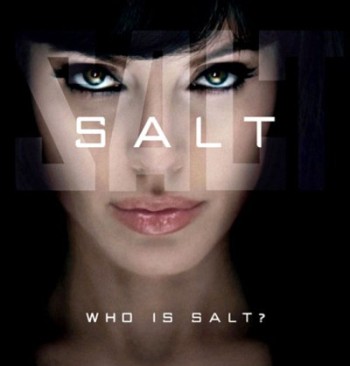
Tom Cruise perfected the practice back in 2006 when he suddenly fell in love and got married just as his film, Mission Impossible 3, about a spy who falls in love and gets married, hit screens. Now, Russian spies are captured and deported just weeks before the release of Aneglina Jolie’s film Salt, about a Russian spy. Meanwhile, Mel Gibson goes off the rails just a month or so before the release of his film, The Beaver, about a guy going off the rails.
It’s the new movie promotion paradigm, viral marketing by way of connecting a film’s plot with out of the blue, completely unexpected real-world events. So what does the upcoming slate of films tell us about future newspaper headlines?
Film: Eat Pray Love; Aug 13
Headline: Exotic Cruise for Recent Divorcees Hijacked in South China Sea
Film: The Switch; Aug 20
Headline: Insurance Companies Phase Out Coverage of Artificial Insemination
Film: Nanny McPhee Returns; Aug 20
Headline: Louise Woodward Arrested in England Over Coma Baby: Accused of “Popping” Another Baby on the Bed
Film: The American; Sept 1
Headline: George Clooney to Become Italian Citizen
Film: Machete; Sept 3
Headline: Drug Cartel Hit Man Kills Two Border Agents With Sword; Remains at Large
Film: Wall Street 2; Sept 24
Headline: BREAKING: Obama Vetoes Financial Reform Bill.
Film: The Social Network; Oct 1
Headline: Facebook Down for Fourth Straight Day, Engineers Suspect Virus
Film: RED; Nov 19
Headline: CIA Pension Scandal Deeper Than Expected
Film: Harry Potter and the Deathly Hallows; Nov 19
Headline: Emma Watson Sex Tape is Real!
Film: Burlesque; Nov 24
Headline: Cher: “Yes, I’m a Lesbian”
Abe Sauer can see the future.
Do You Talk Like William Faulkner?
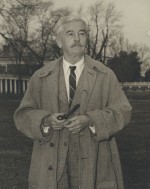
“I think that nobody can say, ‘I’m going to use stream-of-consciousness as my method for writing.’ That’s-that’s wrong. He’d get into trouble. He must use that simply as a tool, only when nothing else will do the work. It’s much better to show the character in familiar terms of-of action, of speech, but sometimes that’s not sufficient. Then you have to use another tool, just as at times the carpenter realizes that his familiar tool is not quite enough to do what he wants to do, so he’s got to stop and make something, make a tool…”
–That’s William Faulkner, lecturing at University of Virginia’s Rouss Hall on May 15, 1957. And better than just reading, you can listen to it on audio tape at Faulkner at Virginia, a wonderful archive assembled by Stephen Railton, and English professor at the University, documenting the late southern lion’s two years as the school’s first writer-in-residence. Who cares who you write like? If you sound anything like the voice on these tapes, any Yankee with a drop of romance in his or her blood will melt at word one.
How the Looming Specter of Viral Marketing Ruins Rap Songs About Consumer Goods
by Willy Staley
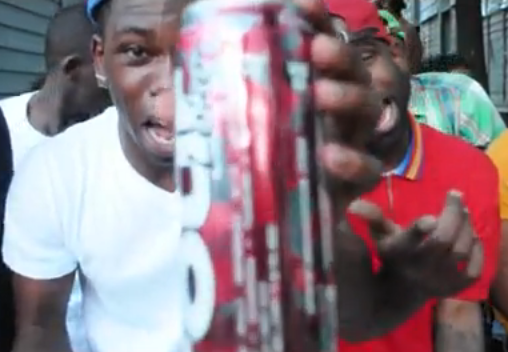
There has been much commiseration lately over the perceived decline of hip-hop. It’s bad because it’s fully transitioned to pop, say some. It’s bad because of The Internet, say others. To me, this seems to be a whole lot of misplaced nostalgia. Do these people really want to return to the early 90’s-so they can hear Cypress Hill on the radio? Or maybe the late 90s, to catch a guest verse from Fiend or C-Murder on some No Limit clusterfuck of a record? The 90s were not some paradise for commercial rap where mainstream radio played UGK, Heltah Skeltah and Mac Dre all the time; most commercial rap sucked in the 90s, too.
So in order to avoid the pitfalls of nostalgia, let’s focus our collective attention in a little closer, on an odd little micro-trend in rap: the way that the current state of viral marketing is totally ruining songs about consumer goods. Specious? Yes. Speculative? Definitely. But best of all, it’s completely unfalsifiable, because it’s happening in my head.
As Dave Bry wrote recently, rap doesn’t concern itself with making a divide between art and commerce, or at least doesn’t always see money as a source of corruption. Bry wrote about how he was saddened to see rappers getting paid by malt liquor companies to shill for them. I assume he was referring to St. Ides’ awesome campaign in the early 90s of having rappers do 30–60 second raps about their product — which tastes like what normal malt liquor might taste like immediately after brushing your teeth.
Ice Cube was their most famous spokesman, but my favorite ad would have to be the brilliantly named Geto Boys track “My Malt’s Playin Tricks On Me”.
When Willie D refers to St. Ides’ “smooth taste” you know that he’s been paid for it, and you know he’s lying through his teeth (which might feel like they’ve just been brushed, but they have not).
But in that age, you didn’t always have to pay rappers to rap about their favorite malt liquor. Let’s not forget Eazy-E’s classic, “8 Ball”, his semi-ode to Olde English 800 which — ironically — was written by Ice Cube, as Cube forces Eazy to admit towards the end of the song.
And while these odes to specific brands of drink pop up from time to time — E-40’s “Carlo Rossi”; Busta Rhymes’ “Pass the Courvoisier” — it is rare that the artists are compensated directly by the bottling company.
It’s easy to understand as part of a larger, historical trend in rap where rappers claim brand affiliations and, somewhat inadvertently, drive trends that way (q.v. Run DMC “My Adidas”; Nelly “Air Force Ones”; The Pack “Vans”). While patently different from advertisements, these songs function even better than advertisements.
Despite whatever the CEO of Cristal said a few years back, this sort of endorsement is incredibly valuable. According to a year-old NPR story, the aforementioned “Pass the Courvoisier” (2001) helped Courvoisier reorient their brand in the last decade. “The Brandy of Napoleon” got a hood pass. Or, in their marketing manager’s words, “it was huge for the brand. Because it went on all the big hit lists. And the truth of the matter is that it really showed us what the importance of having that particular status in the African-American market was all about.”
McDonald’s took note of “that particular status” back in 2005, when they publicly offered $1 to $5 for every time a rapper’s in-song mention of a Big Mac aired on the radio. This led to a bit of a backlash against McDonald’s for their cynical marketing strategies. Between McDonald’s and Courvoisier, the lesson to advertisers is mixed: on the one hand, this sort of endorsement is invaluable, but it is damaging to publicly solicit it.
Enter the concurrent trends of declining album sales and viral marketing, and we can finally get to what’s going on inside my head, instead of these boring facts.
I recently came across this video by an unknown group of rappers from Cleveland called the Gwop Gang. It’s dedicated to Four Loko, a high-ABV caffeinated alkapop beverage that comes in a variety of foul-sounding flavors. Imagine Smirnoff Ice wearing Ed Hardy, and on a lot of blow. I invite you to enjoy the song, because it’s really quite good.
What I find fascinating about the video is the sheer amount of detail that the Gwop Gang gets into when talking about Four Loko. Not only do they mention the MSRP ($2.50-$3.00), they mention the precise number of flavors (eight), the Alcohol-By-Volume (12%), and the number of fluid ounces per can (24). The video constantly flashes close-ups of Four Loko cans. No, it certainly doesn’t look like an advertisement in the traditional sense, but it shares some elements.
Also, merely by clicking on the related videos sidebar on YouTube, I came across four more songs dedicated to Four Loko that all debuted on YouTube last month (“Four Loko” by Chocolate City ft. K. Nobles; “Four Loko” by Young Dooby, Mag-Niff, and El Nino; “Four Loko Song” by Josh Gates; and ). Now, rappers can be quick to hop on a trend, but five songs dedicated to one disgusting drink — or, sorry, a line of eight disgusting drinks — in one month seems like a statistical anomaly.
And it’s hard to ignore how odd that is, when it comes on the heels of the Bros Icing Bros phenomenon, which had even the King of Trend Reporting, The New York Times, scratching its old, grey head. Are alkapop bottlers in desperate need of our money? And what odd channels would they go through to get us to part ways with it? Are they willing to toy with certain assumptions I have about reality — basically, my assumption that rap songs aren’t advertisements — to get me to buy caffeinated malt beverages?
Or alternately, are rappers totally lazy, artistically bankrupt, and trying to promote themselves by making raps about trendy topics? Why, after all, would Four Loko pay rappers who are complete unknowns to promote their product? No matter how little they might have to pay guys like the Gwop Gang or Young Dooby to make a half-assed track, what could the possible returns be? But then again, assuming you’ve read this far, here we are talking about it.
So, there is really only one thing we can take away from these Four Loko videos: rap songs about consumer goods will never be the same again, at least for me. My knowledge that viral marketing exists is enough to taint these type of songs forever — an upsetting prospect.
And yet, what right do I have to be upset with this possibility? I prefer to listen to a form of music that is awash in references to consumer goods as a rule. I know what my favorite rappers’ diamond chains look like; I know that, for whatever reason, virtually all of them like to eat at Pappadeaux; I know what jeans they like to wear; I even know what colognes they like to wear; I know what cars they like to drive; I listen religiously to a guy who calls himself Gucci Mane. This is what it is to really listen to rap music. Sometimes, you might as well be flipping through some bizarro version of SkyMall.
But I still think that, in spite of rap’s obsession with material wealth and consumer goods, there is a real difference between the obsession itself and leveraging that obsession to reach a target audience. As COMBAT! blog’s Dan Brooks wrote, in his piece on Bros Icing Bros, “the premise of viral marketing is that we are exposed to it involuntarily through what we used to think of as our normal lives.” That, he says, is what makes it so terrifying; it’s advertising that directly and intentionally assaults our understanding of reality. As different as rappers have always been from their audience — this is half the fun of listening to rap, and the premise of an excellent recent Gucci Mane track — we have always assumed that they make decisions much like we do, without being directly compensated by advertisers. So, even when we go along with the trends that they set, we maintain a bit of autonomy from the corporations who benefit from this odd form of free advertising; we feel we are part of an authentic trend, not a successful marketing campaign.
So say what you will about the evils of rap music, or its decline as an art form, or whatever. At least rap — on its own — doesn’t undermine basic assumptions you have about reality.
Willy Staley writes about federal urban policy for Next American City, and about Bay Area rap music (kind of) on Nation of Thizzlam.
Tony Yayo, "Pass The Patron"
Parental alert!!! Following yesterday’s important warning about the “digital drugs” craze, newly discovered video evidence indicates that rapper Tony Yayo is DOSING young internet nerds with extremely potent Patron tequila THROUGH THEIR COMPUTERS!!! Also, Yayo’s boss 50 Cent has become Max Headroom.
Courtney Love Live: The Train That Never Really Wrecks
by Tyler Coates

Hole has been touring hard this summer. The band is now in Minneapolis, then heading for Japan, then playing some west coast dates. Early on, the words “disaster” were being used-but by the time they got to Texas, the reports we were hearing were “amazing.” Our chief Chicagoland correspondent reports in.
I woke up early the morning that the tickets for the Hole concert went on sale just in case the show sold out. The idea of seeing Courtney Love-a for-real rock icon-live made me freak out. I didn’t bother to make plans with friends to see the show; I assumed that I’d know a handful of people who’d be as excited as I was. It turned out, however, that no one I knew was interested in the show, and I found myself becoming equally indifferent as the date grew closer.
I couldn’t even find my ticket on the morning of Wednesday’s show, and I was a bit relieved. While I searched my apartment, I wondered if losing the ticket was the best excuse for avoiding a potentially terrible concert. When I did find it, I realized that I had to go, as my chances of selling it were slim and I was in no position to skip out on a concert after paying more than forty dollars.
You’ve heard that Courtney Love is a little crazy, right? Her variety of nuttiness is one reason to see her in concert: to experience something that is unpredictable and rock ’n’ roll, but also something that teeters on the border of trainwreck. Is there any other musician who can provide such an unexpected and unpredictable performance? There is a reason why there were so many gays in the audience-we like to watch a hot mess because we’re SO MEAN. Was it worth it to attend a show for which I had very low expectations?
I skipped the opening act (I’m sure the audience at the Vic will never forget the night they saw FOXY SHAZAM open for Hole) and arrived just in time to hear trumpets blare over the speakers. The lights dimmed and the majority of the crowd pulled out their Blackberries and iPhones in order to film the opening moments of the show. It sounded a bit like the music one hears in the gift shops at Busch Gardens: it was deliberately schlocky, so pretentiously dramatic, yet it completely worked as Courtney strutted onto the stage clad in a black backless dress and thigh-high boots. She took a drag from her cigarette and, with a hand on her hip and a half-grin that didn’t leave her face for the rest of show, purred, “Shall we?”
I was neither over- nor under-whelmed by the first songs. It felt a bit like what “rock concerts” look like in movies: a montage of two-minute versions of songs you’d recognize from some place else. But when the first set ended, it was time for some onstage banter. “VALERIE LOVES ME,” she screamed, and I got super excited; I expected a cover of the Material Issue song. Alas, it was just a segue into the first of many monologues-all of which had the same theme. “That’s my favorite song to come out of Chicago,” she said. “Well, except for the ones that Billy wrote for me.”
Have you ever run into a friend at a party and they’re kind of wasted and they mention an ex but try to play it off in a way that it’s, like, not even a big deal, OK? Or have you ever wanted to totally bash someone to a mutual acquaintance even though you know you shouldn’t, and that doing so would just make you look like a shit? Well, Courtney has a lot to say about Billy Corgan. “I don’t know why Billy thinks I can’t write songs,” Courtney said after playing “Pacific Coast Highway,” from Hole’s latest album, “Nobody’s Daughter.” “That song was good, right? It was co-written by Courtney Love. And I wrote the melody, which is the best part, right?” The crowd cheered, giving the positive reinforcement that Courtney needed and pretty much just flat-out asked for. “Seriously,” she said, suddenly softening the blow, “Billy is so talented. I can’t even deal with it.”
There were other interjections about Billy-with whom I’m now on a first-name basis-throughout the show, but he isn’t her only enemy in Chicago. “Is Jim DeRogatis here tonight?” she asked. “If so, fuuuuuuck youuuuuuuu!” (My sincere apologies to DeRo fans, but I’m on Team Courtney in this matter.) Sad to say, I was too far back in the theater to ask her what she thought of Chicagoan Liz Phair’s “Funstyle.”
The rest of the set was a mixture of forgettable new songs and selections from “Live Through This.” Courtney certainly relied on the guys behind her to play the instruments, but she played to the audience nonetheless: she shoved her arms down to the people in the front row, chastised a girl for being too rowdy (“I was never that loud!”), and demanded that more lingerie be thrown at the stage. During the encore, in which she returned to the stage wearing an unbuttoned dress shirt over her visible bra and stockings in a possible Bob Fosse homage, she sang a cover of Big Star’s “Thirteen” (classic rock concert move!) and then polled the audience on their credit scores. It was the MTV Unplugged version of the fully amplified crazy that one might expect from Courtney Love. There were no breakdowns, no public humiliations, and I was really excited!
I might be in the minority here, but I genuinely want Courtney Love to succeed. It’s so easy-and frankly, so cliched-to call for the public humiliation of a famous person. Granted, those with a penchant for airing their dirty laundry generally have a need for validation and the inability to ignore criticism, but I’m also someone who thinks that everyone is a bit of a narcissist. (Hello! I have a blog, and I have my own personal Billy Corgans.)
It was quite refreshing, though, to see a very unpretentious crowd enjoy a band they really loved. Hole’s a band that has, for better and for worse, been around in various incarnations for more than twenty years now, and they’re still attracting a diverse crowd that ranges from girls in the the lace tops and kick-wear to bros wearing cargo shorts and rugby shirts.
There might even still be some tiny chance that Courtney Love’s whole persona is a big act, that she choreographs her every move, and that we all may have fallen for it. But she seemed so genuine, so completely and honestly off-the-cuff-and I don’t like the implications of an alternate reality in which a Bizarro Courtney has such control over a thousand people in one night. Perhaps I’m over-thinking all of it and should just acknowledge that the group of a thirteen hundred happy people was evidence of a great show.
Tyler Coates will be very happy to have breakfast drinks with you this coming Sunday at 11 a.m. in Chicago!
Photo by Ted van Pelt from Flickr.
Will Aaron Sorkin Avoid The Fatal Trap Of "The Politician"?
by Nate Freeman
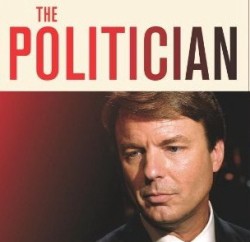
Aaron Sorkin appears to be bold enough to take on the life of John Edwards, the philanderer with a $500 haircut. Sorkin has optioned The Politician, the tell-all written by aide Andrew Young, and plans to adapt it for the screen, producing and directing. The film will chronicle the former North Carolina senator’s fall from grace, which began when that very real and legitimate pillar of journalistic ethics the National Inquirer first started reporting on his affair with Jay McInerney muse Rielle Hunter in October 2007.
There are so many ways to fuck this one up, but there’s one potential pratfall that Sorkin would be particularly wont to avoid: the sanctimonious montage of the guilt-ridden man drowning his sorrows at a bar. It’s a well-worn cliché, and after Gabriel Sherman’s article in the New Republic shared Edwards’ social habits with the world, it seems like an unavoidable inclusion toward the end of this tale of politics and scandal. If Sorkin has any discretion, however, the film will cut the following scenes of Edwards’ bar crawls through Durham and Chapel Hill, as written in the article: Edwards shimmying up on Duke grad students palming a glass of white wine; Edwards talking awkwardly to women at saloons with names like The Wooden Nickel; and Edwards slamming back brews at dive bars.
But what filmmaker can resist that kind of drama? Oh, yes, it’s all there. The golden locks of the one-time presidential frontrunner become mussed as the sequence progresses, his eyes-glassed-over with guilt, the lids trembling oh so slightly-entreating the barmaid for another chilled Riesling. The shot will cut from one watering hole to the next, each as listless as the previous, each hitting you over the head with this crisis of the human condition. This is some serious problem-boozing, so it will get the most inevitable of soundtracks-the god-awful 90s dad-rock of Semisonic’s “Closing Time”.
Though if the film does stoop to that level, would it be much of a surprise? The subtlety-killing trailer for Sorkin’s The Social Network features a children’s choir rendition of “Creep.” Yes, we get it. Â So, Aaron, when you adapt The Politician, try and depict this modern American tragedy with some honesty and compassion-avoid the dead-end of the montage.
Down the Rabbit Hole: A Guide To Rabies Videos
by Lindsay Robertson
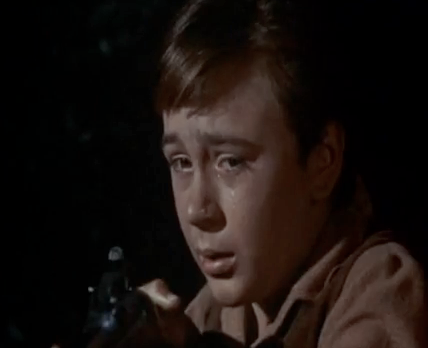
There are more than one hundred rabid raccoons in Central Park this summer. There are probably rabid raccoons in a lot of places this summer. There are also, it turns out, quite a lot of rabies-related videos available on YouTube. The other day I found one after watching a completely innocent video of an adorable (non-rabid) raccoon, and couldn’t stop watching videos related to rabies, for hours. The most common types of YouTube rabies videos, of pets and children with a foam-like substance on their mouths, will not be included because they’re not nearly as cute or interesting as their uploaders seem to think they are.
A very unscientific survey revealed to me that almost all American children go through a phase where they are obsessed with rabies. This part of child development usually occurs after the child has first viewed the classic film “Old Yeller,” in which a boy named Travis’s beloved pet dog is attacked by a wolf and contracts rabies, or “hydrophobia,” as they call it in the movie because they’re simple folk. Usually a loyal and trusted friend, Old Yeller, in the grip of the disease, turns into a violent monster. Travis is forced to kill Old Yeller with a shotgun.
This movie is effective on children because unless they’re psychopaths, it makes them sad. A viewing of “Old Yeller” is in some cases a child’s first introduction to a whole host of big ideas: compassionate euthanasia, the danger that lurks outside the home, the moment when a child becomes an adult, the concept of a loved one turning into someone no longer recognizable or even bad, even just the idea that pets die.
The viewing of “Old Yeller” is such a common experience in American childhoods that it had its own (funny) scene on “Friends.”
So any exploration of rabies-related online videos must naturally start with “Old Yeller.” Someone has, handily, already put together a clip that contains “all the rabies parts.” If you’ve never seen “Old Yeller,” this will explain what the big deal is. If you did see it as a child, it will probably trigger some pretty strong emotions, beginning with dread. (You might also wonder “How did they get a cow to act rabid?” and giggle once again at the obvious pile of random fur that we’re supposed to believe is the dead wolf.)
Rabies is a virus that, untreated, is fatal to all warm-blooded animals. (This presumably includes whales, dolphins, and duck-billed platypus, but nobody knows for sure.) It’s usually spread by animal bites and causes flu-like symptoms, acute pain, extreme excitement, mania, encephalitis, excessive saliva (foaming at the mouth), depression, hydrophobia and, finally, death. Symptoms can show up as early as ten days or as late as two years after a bite. A person bitten by an animal that could have rabies needs to get shots within ten days of the bite or exposure. Contrary to popular belief, the shots are no more painful than a flu shot. They stopped doing the multiple shots in the stomach with a long needle thing in the U.S. quite a while ago. (Whenever I tried to pet a squirrel as a child, my mother would caution “Twenty shots in the tummy with a long needle!,” and I would stop.)
People have died from rabies after simply finding a bat in their bed, without noticing a bite. There are memorials to some of them on YouTube. If you find a bat in your bed, go to the doctor. Bats are the leading cause of rabies in the U.S. and the U.K., which has eradicated rabies completely except for bats.
Now, to the real-life rabid animals. Note: this should be obvious, but these videos are of very sick animals just before their deaths, so feel yourself out before clicking.
This is a baby deer with rabies.
This is a raccoon with rabies, and a woman realizing it and feeling very sad. Non-rabid raccoons are not usually out and about during the day, and this one has the spasms that are a symptom of the disease:
The easiest way to spot rabies in a wild animal is to notice that that wild animal isn’t running away from you as fast as it can. This is why children are warned to resist the temptation to pet animals that aren’t scared of them. There are exceptions for urban squirrels and the like, but you probably shouldn’t pet them, either.
The young men who encountered this almost-certainly rabid deer should have known better than to let it hang out with them or whatever it seems to be trying to do.
The deer stopped suddenly when he stepped in the water. That’s where the hydrophobia comes in. Hydrophobia is the scariest and most fascinating symptom of rabies. Sufferers experience extremely painful throat and stomach spasms when water is offered to them, or even when the word “water” is said aloud. It’s said that in olden times, people would throw people with rabies in tubs of water in an effort to cure them, which must have been unspeakably painful hospice care.
Here’s a recent interview with a man who was attacked in a parking lot by a rabid fox and had to fight it off for several minutes, all of which were captured on security video. The video itself is there too, and it’s crazy. And also the interviewer says: “You look pretty good for a guy who was attacked by a rabid fox.”
Then there’s another kind of rabies video- one that won’t be in this post. Rabies may be rare in humans in the western world, but an estimated 55,000 people die from the disease every year worldwide, mostly in Asia and Africa, most after being bitten by stray dogs.
In what appears in every way to be a good-faith effort to educate health workers, people in those countries have put up many videos of rabies sufferers, in many cases, children, unable to drink water because of hydrophobia. They’re unwatchable, especially with the knowledge that it’s too late for anyone to do anything for them. Don’t go looking for them. (Instead, maybe consider a donation to The Alliance for Rabies Control, which is working to eradicate rabies in the developing world.)
Finally, here’s what rabies doesn’t look like: non-rabid baby raccoons playing in a hammock. Awww!:
Lindsay Robertson is weird in what she hopes is “a good way.”
Staff Lunch Talk: When A Headline Is A Handful

Choire: whoa
http://www.portlandtribune.com/news/story.php?story_id=127913967087475000
Balk: Come ON.
Choire: RIGHT?
Balk: I cannot believe an editor did not yank that headline. It is kind of shocking that they were able to pull it off. I mean, you’ve got to give them a hand for a job well done.
Choire HI O
Balk: They could not have squeezed out any more from this story!
Choire: oof
Balk: They go all the way. I mean, they could have just tossed it off, but when you look at how it all shakes out, I can’t see any other outlet bothering to take a whack at it.
Choire: …
Balk: Okay, I think I’m done now.
Choire: no you’re not
Balk: I can’t think of anything for “off the wrist,” so yeah, I think I’m spent.
Vatican Clarifies: Women Priests Not As Terrible As Sexual Abuse Of Children
“While sexual abuse was a ‘crime against morality,’ the attempt to ordain a woman was a ‘crime against a sacrament,’” says Monsignor Charles Scicluna, an official in the Vatican’s doctrinal department, discussing recent revisions to Church laws. Although language against the ordination of women was included in a document that mostly deals with pedophilia, that was mostly a coincidence, says Scicluna, and “should not be interpreted as considering all these crimes to be equal. They are crimes of a different nature”.
